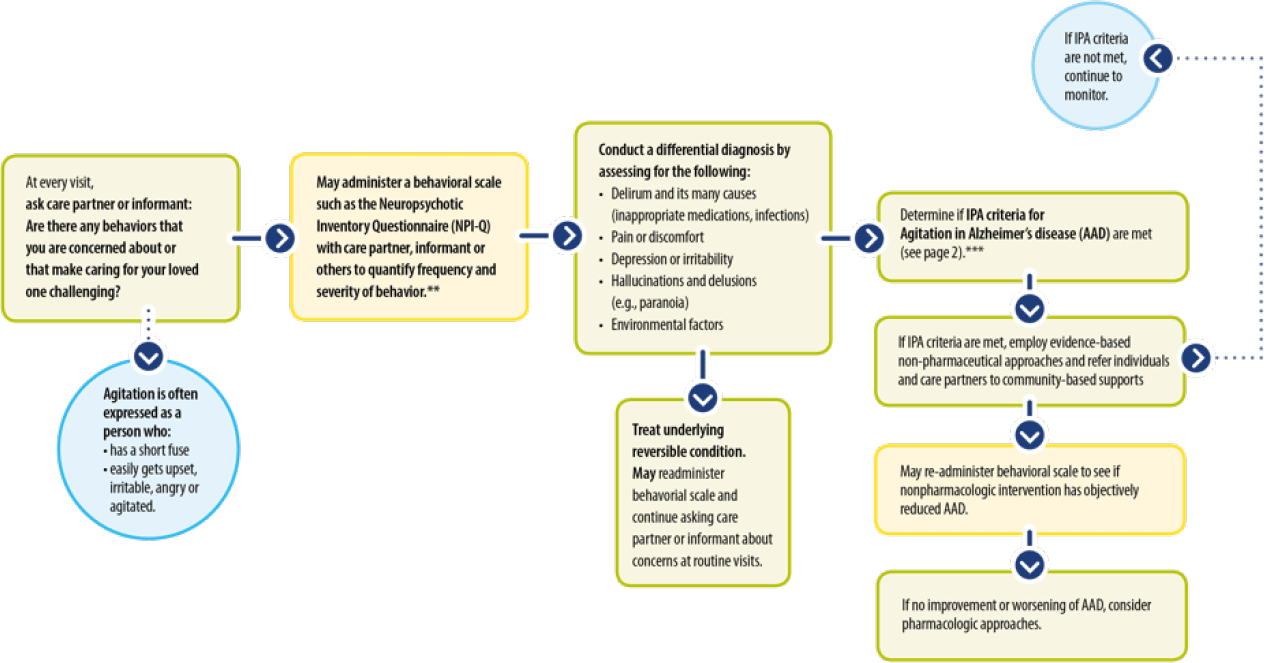No CrossRef data available.
Article contents
P62: Agitation in Alzheimer’s Disease (AAD): A Decision Tree for Healthcare Providers
Published online by Cambridge University Press: 02 February 2024
Abstract
Developed by THE GERONTOLOGIC SOCIETY OF AMERICA
Supported by an unrestricted educational grant from Avanir
The prevalence of agitation in Alzheimer’s Disease (AAD) approaches 80%. Patients with AAD have more severe behavioral,depressive, and frontal lobe symptoms and are at increased risk for hospitalization and nursing home placement.
Early agitation is a robust predictor of accelerated progression and mortality and is distressing and dangerous for patients and care partners.
This presentation was recently developed by the Gerontologic Society of America (GSA) which convened an expert AD Working Group to develop a “Decision Tree” for healthcare providers relative to the assessment of AAD and the employment of Non-Pharmacologic and Pharmacologic treatment options

- Type
- Posters
- Information
- Copyright
- © International Psychogeriatric Association 2024




